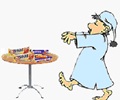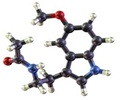A study is the first to assess the effectiveness of treating sleep disorders in adults with a traumatic brain injury (TBI).
A study in the April 15 issue of the Journal of Clinical Sleep Medicine is the first to assess the effectiveness of treating sleep disorders in adults with a traumatic brain injury (TBI). Results indicate that treatment may result in the objective resolution of the sleep disorder without improvements in daytime sleepiness or neuropsychological function.
Results show that in brain-injured subjects with obstructive sleep apnea (OSA), three months of treatment with continuous positive airway pressure (CPAP) therapy dramatically reduced the severity of OSA from 31.4 to 3.8 apneas and hypopneas per hour of sleep; however, there was no demonstrable improvement in measures of daytime sleepiness. Participants experienced no significant changes in measures of mood, quality of life and cognitive performance after treatment for a sleep disorder.According to principal investigator Richard J. Castriotta, M.D., director of the division of Pulmonary, Critical Care and Sleep Medicine at the University of Texas Health Science Center in Houston, researchers were not surprised by the fact that patients with sleep disorders had more severe injuries; however the lack of improvement in excessive sleepiness and neuropsychological testing after treatment was unexpected.
"The TBI patients with sleep apnea and no improvement in sleepiness may have had a combination of pre-existing sleep apnea and posttraumatic hypersomnia, causing sleepiness after the injury," said Castriotta. "These patients may need stimulant therapy in addition to CPAP in order to improve symptoms."
The study involved 57 adults with an average age of 39 years who had suffered a traumatic brain injury at least three months earlier (average 68 months). Seventy-seven percent of the injuries (44) were incurred as a result of a motor-vehicle accident; other causes were assault, a fall or a falling object. Sixty-one percent of the subjects (35) were free of a sleep disorder, while 23 percent (13) had OSA, 7 percent (4) had periodic limb movements in sleep (PLMS), 5 percent (3) had narcolepsy without cataplexy and 3 percent (2) had post-traumatic hypersomnia.
Participants underwent objective evaluation by overnight polysomnography to detect the presence of sleep disorders, and both objective and subjective tests were used to measure daytime sleepliness, mood, quality of life and cognitive performance. Subjects who were diagnosed with OSA received individualized treatment with CPAP therapy while those suffering from narcolepsy, post-traumatic hypersomnia and PLMS received predetermined dosages of medications that were not adjusted after assessment.
According to the authors, research has shown that some OSA patients have residual hypersomnia despite adequate CPAP therapy, which may explain the lack of improvement in measures of daytime sleepiness. Castriotta stated that the study illustrates how difficult it can be to measure the burden of sleep disorders in people with traumatic brain injuries.
Advertisement
SRM















